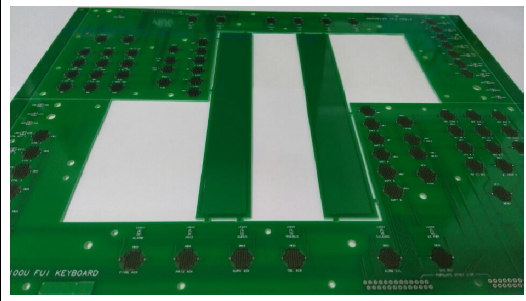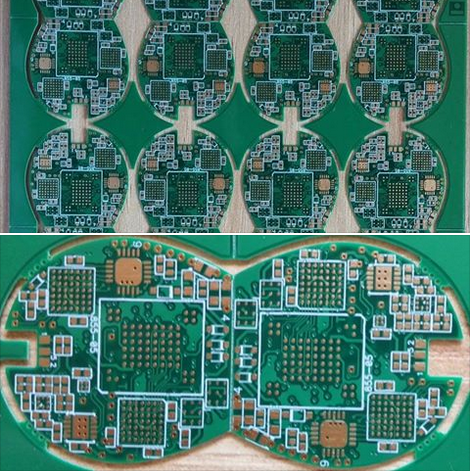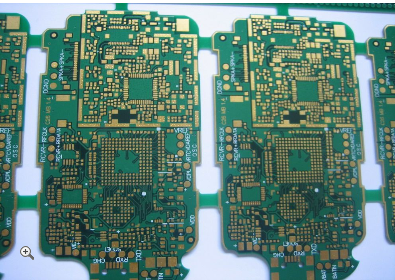-
 Agriculture
Agriculture
-
 Health-Care
Health-Care
-
 Environment
Environment
-
 Construction-Real-Estate
Construction-Real-Estate
-
 Tools-Hardware
Tools-Hardware
-
 Home-Garden
Home-Garden
-
 Furniture
Furniture
-
 Luggage-Bags-Cases
Luggage-Bags-Cases
-
 Medical-devices-Supplies
Medical-devices-Supplies
-
 Gifts-Crafts
Gifts-Crafts
-
 Sports-Entertainment
Sports-Entertainment
-
 Food-Beverage
Food-Beverage
-
 Vehicles-Transportation
Vehicles-Transportation
-
 Power-Transmission
Power-Transmission
-
 Material-Handling
Material-Handling
-
 Renewable-Energy
Renewable-Energy
-
 Safety
Safety
-
 Testing-Instrument-Equipment
Testing-Instrument-Equipment
-
 Construction-Building-Machinery
Construction-Building-Machinery
-
 Pet-Supplies
Pet-Supplies
-
 Personal-Care-Household-Cleaning
Personal-Care-Household-Cleaning
-
 Vehicle-Accessories-Electronics-Tools
Vehicle-Accessories-Electronics-Tools
-
 School-Office-Supplies
School-Office-Supplies
-
 Packaging-Printing
Packaging-Printing
-
 Mother-Kids-Toys
Mother-Kids-Toys
-
 Business-Services
Business-Services
-
 Commercial-Equipment-Machinery
Commercial-Equipment-Machinery
-
 Apparel-Accessories
Apparel-Accessories
-
 Security
Security
-
 Shoes-Accessories
Shoes-Accessories
-
 Vehicle-Parts-Accessories
Vehicle-Parts-Accessories
-
 Jewelry-Eyewear-Watches-Accessories
Jewelry-Eyewear-Watches-Accessories
-
 Lights-Lighting
Lights-Lighting
-
 Fabric-Textile-Raw-Material
Fabric-Textile-Raw-Material
-
 Fabrication-Services
Fabrication-Services
-
 Industrial-Machinery
Industrial-Machinery
-
 Consumer-Electronics
Consumer-Electronics
-
 Electrical-Equipment-Supplies
Electrical-Equipment-Supplies
-
 Electronic-Components-Accessories-Telecommunications
Electronic-Components-Accessories-Telecommunications
-
 Home-Appliances
Home-Appliances
-
 Beauty
Beauty
-
 Chemicals
Chemicals
-
 Rubber-Plastics
Rubber-Plastics
-
 Metals-Alloys
Metals-Alloys
- Masonry Materials
- Curtain Walls & Accessories
- Earthwork Products
- Fireproofing Materials
- Heat Insulation Materials
- Plastic Building Materials
- Building Boards
- Soundproofing Materials
- Timber
- Waterproofing Materials
- Balustrades & Handrails
- Bathroom & Kitchen
- Flooring & Accessories
- Tiles & Accessories
- Door, Window & Accessories
- Fireplaces & Stoves
- Floor Heating Systems & Parts
- Stairs & Stair Parts
- Ceilings
- Elevators & Escalators
- Stone
- Countertops, Vanity Tops & Table Tops
- Mosaics
- Metal Building Materials
- Multifunctional Materials
- Ladders & Scaffoldings
- Mouldings
- Corner Guards
- Decorative Films
- Formwork
- Building & Industrial Glass
- Other Construction & Real Estate
- Wallpapers/Wall panels
- HVAC System & Parts
- Outdoor Facilities
- Prefabricated Buildings
- Festive & Party Supplies
- Bathroom Products
- Household Sundries
- Rain Gear
- Garden Supplies
- Household Cleaning Tools & Accessories
- Lighters & Smoking Accessories
- Home Storage & Organization
- Household Scales
- Smart Home Improvement
- Home Textiles
- Kitchenware
- Drinkware & Accessories
- Dinnerware, Coffee & Wine
- Home Decor
- Golf
- Fitness & Body Building
- Amusement Park Facilities
- Billiards, Board Game,Coin Operated Games
- Musical Instruments
- Outdoor Affordable Luxury Sports
- Camping & Hiking
- Fishing
- Sports Safety&Rehabilitation
- Ball Sports Equipments
- Water Sports
- Winter Sports
- Luxury Travel Equipments
- Sports Shoes, Bags & Accessories
- Cycling
- Other Sports & Entertainment Products
- Artificial Grass&Sports Flooring&Sports Court Equipment
- Scooters
- Food Ingredients
- Honey & Honey Products
- Snacks
- Nuts & Kernels
- Seafood
- Plant & Animal Oil
- Beverages
- Fruit & Vegetable Products
- Frog & Escargot
- Bean Products
- Egg Products
- Dairy Products
- Seasonings & Condiments
- Canned Food
- Instant Food
- Baked Goods
- Other Food & Beverage
- Meat & Poultry
- Confectionery
- Grain Products
- Feminie Care
- Hair Care & Styling
- Body Care
- Hands & Feet Care
- Hygiene Products
- Men's Grooming
- Laundry Cleaning Supplies
- Travel Size & Gift Sets
- Room Deodorizers
- Other Personal Care Products
- Pest Control Products
- Special Household Cleaning
- Floor Cleaning
- Kitchen & Bathroom Cleaning
- Oral Care
- Bath Supplies
- Yellow Pages
- Correction Supplies
- Office Binding Supplies
- Office Cutting Supplies
- Board Erasers
- Office Adhesives & Tapes
- Education Supplies
- Pencil Cases & Bags
- Notebooks & Writing Pads
- File Folder Accessories
- Calendars
- Writing Accessories
- Commercial Office Supplies
- Pencil Sharpeners
- Pens
- Letter Pad/Paper
- Paper Envelopes
- Desk Organizers
- Pencils
- Markers & Highlighters
- Filing Products
- Art Supplies
- Easels
- Badge Holder & Accessories
- Office Paper
- Printer Supplies
- Book Covers
- Other Office & School Supplies
- Stationery Set
- Boards
- Clipboards
- Stamps
- Drafting Supplies
- Stencils
- Electronic Dictionary
- Books
- Map
- Magazines
- Calculators
- Baby & Toddler Toys
- Educational Toys
- Classic Toys
- Dress Up & Pretend Play
- Toy Vehicle
- Stuffed Animals & Plush Toys
- Outdoor Toys & Structures
- Balloons & Accessories
- Baby Food
- Children's Clothing
- Baby Supplies & Products
- Maternity Clothes
- Kids Shoes
- Baby Care
- Novelty & Gag Toys
- Dolls & Accessories
- Puzzle & Games
- Blocks & Model Building Toys
- Toddler Clothing
- Baby Clothing
- Kids' Luggage & Bags
- Arts, Crafts & DIY Toys
- Action & Toy Figures
- Baby Appliances
- Hobbies & Models
- Remote Control Toys
- Promotional Toys
- Pregnancy & Maternity
- Hygiene Products
- Kid's Textile&Bedding
- Novelty & Special Use
- Toy Weapons
- Baby Gifts
- Baby Storage & Organization
- Auto Drive Systems
- ATV/UTV Parts & Accessories
- Marine Parts & Accessories
- Other Auto Parts
- Trailer Parts & Accessories
- Auto Transmission Systems
- Train Parts & Accessories
- Universal Parts
- Railway Parts & Accessories
- Auto Brake Systems
- Aviation Parts & Accessories
- Truck Parts & Accessories
- Auto Suspension Systems
- Auto Lighting Systems
- New Energy Vehicle Parts & Accessories
- Auto Steering Systems
- Wheels, Tires & Accessories
- Bus Parts & Accessories
- Auto Performance Parts
- Cooling System
- Go-Kart & Kart Racer Parts & Accessories
- Air Conditioning Systems
- Heavy Duty Vehicle Parts & Accessories
- Auto Electrical Systems
- Auto Body Systems
- Auto Engine Systems
- Container Parts & Accessories
- Motorcycle Parts & Accessories
- Refrigeration & Heat Exchange Equipment
- Machine Tool Equipment
- Food & Beverage Machinery
- Agricultural Machinery & Equipment
- Apparel & Textile Machinery
- Chemical Machinery
- Packaging Machines
- Paper Production Machinery
- Plastic & Rubber Processing Machinery
- Industrial Robots
- Electronic Products Machinery
- Metal & Metallurgy Machinery
- Woodworking Machinery
- Home Product Manufacturing Machinery
- Machinery Accessories
- Environmental Machinery
- Machinery Service
- Electrical Equipment Manufacturing Machinery
- Industrial Compressors & Parts
- Tobacco & Cigarette Machinery
- Production Line
- Used Industrial Machinery
- Electronics Production Machinery
- Other Machinery & Industrial Equipment
- Camera, Photo & Accessories
- Portable Audio, Video & Accessories
- Television, Home Audio, Video & Accessories
- Video Games & Accessories
- Mobile Phone & Accessories
- Electronic Publications
- Earphone & Headphone & Accessories
- Speakers & Accessories
- Smart Electronics
- TV Receivers & Accessories
- Mobile Phone & Computer Repair Parts
- Chargers, Batteries & Power Supplies
- Used Electronics
- VR, AR, MR Hardware & Software
- Projectors & Presentation Equipments
- Other Consumer Electronics
- Cables & Commonly Used Accessories
- Computer Hardware & Software
- Displays, Signage and Optoelectronics
- Discrete Semiconductors
- Wireless & IoT Module and Products
- Telecommunications
- Connectors, Terminals & Accessories
- Development Boards, Electronic Modules and Kits
- Circuit Protection
- Sensors
- Isolators
- Audio Components and Products
- Integrated Circuits
- Power Supplies
- Relays
- RF, Microwave and RFID
- Electronic Accessories & Supplies
- Passive Components
- PCB & PCBA
- Air Quality Appliances
- Home Appliance Parts
- Heating & Cooling Appliances
- Small Kitchen Appliances
- Laundry Appliances
- Water Heaters
- Water Treatment Appliances
- Refrigerators & Freezers
- Personal Care & Beauty Appliances
- Major Kitchen Appliances
- Cleaning Appliances
- Second-hand Appliances
- Smart Home Appliances
- Other Home Appliances
- Energy Chemicals
- Inorganic Chemicals
- Basic Organic Chemicals
- Agrochemicals
- Admixture & Additives
- Catalysts & Chemical Auxiliary Agents
- Pigments & Dyestuff
- Coating & Paint
- Daily Chemicals
- Polymer
- Organic Intermediate
- Adhesives & Sealants
- Chemical Waste
- Biological Chemical Products
- Surface Treatment Chemicals
- Painting & Coating
- Chemical Reagents
- Flavor & Fragrance
- Non-Explosive Demolition Agents
- Other Chemicals
- Custom Chemical Services
Efficient Heat Dissipation In Single Layer Copper Substrate PCB Design
In the rapidly advancing world of electronics, efficient thermal management has become a critical factor in ensuring the reliability and longevity of devices. As components shrink in size and increase in power density, managing heat dissipation in printed circuit boards (PCBs) is more challenging than ever. This article delves into the strategies and techniques for achieving efficient heat dissipation in single-layer copper substrate PCB designs, a topic of immense importance for engineers and designers working on cost-effective yet high-performance applications. Single-layer PCBs, with their simplicity and affordability, are widely used in consumer electronics, automotive systems, and industrial controls. However, their limited layer count poses significant thermal management hurdles, making optimized heat dissipation not just beneficial but essential for preventing overheating, reducing failure rates, and enhancing overall system efficiency. By exploring various aspects such as material properties, layout optimization, and supplemental cooling methods, this discussion aims to provide practical insights for improving thermal performance in these ubiquitous boards.
Material Selection and Copper Substrate Properties
The foundation of effective heat dissipation in single-layer PCBs lies in the choice of materials, particularly the copper substrate. Copper is renowned for its excellent thermal conductivity, approximately 400 W/mK, which allows it to rapidly transfer heat away from hot components. In single-layer designs, the copper layer serves not only as an electrical conductor but also as a primary heat spreader. Selecting the appropriate copper thickness is crucial; thicker copper layers, such as 2 oz or 3 oz, provide better thermal mass and conductivity, though they may increase cost and manufacturing complexity. Designers must balance these factors based on the thermal load of the application.
Beyond copper, the substrate material plays a supportive role in thermal management. Standard FR-4, with a thermal conductivity of around 0.3 W/mK, offers limited heat dissipation, but alternatives like metal-core PCBs or thermally enhanced substrates can be integrated even in single-layer designs to improve performance. For instance, using a dielectric layer with higher thermal conductivity between the copper and base material can facilitate better heat transfer to the environment. Understanding these material properties enables designers to make informed decisions that enhance the PCB's ability to manage heat efficiently.
Component Placement and Layout Optimization
Strategic component placement is paramount for maximizing heat dissipation in single-layer copper substrate PCBs. High-power components, such as voltage regulators or power transistors, should be positioned to minimize thermal hotspots and leverage the copper layer's spreading capability. Placing these components near the board's edges or in areas with ample copper pours allows heat to dissipate more effectively into the surrounding environment or through attached heat sinks. Additionally, orienting components to avoid clustering heat-generating parts reduces localized temperature rises, which can compromise performance and reliability.
Layout optimization further enhances thermal management by incorporating large copper areas and thermal relief patterns. Expanding copper pours around high-power components increases the surface area for heat dissipation, acting as an integrated heat sink. Thermal vias, though more common in multilayer designs, can sometimes be adapted in single-layer boards by connecting to additional thermal pads or external散热片. Ensuring adequate spacing between components also promotes airflow and reduces thermal coupling. By thoughtfully arranging elements and maximizing copper utilization, designers can significantly improve the board's thermal efficiency without adding complexity.
Supplemental Cooling Techniques
While material and layout choices form the core of heat dissipation, supplemental cooling methods are often necessary for high-power applications. Passive cooling solutions, such as attaching heat sinks directly to high-power components or the copper substrate, can dramatically enhance thermal performance. Heat sinks work by increasing the surface area for convection and radiation, and in single-layer PCBs, they can be mounted using thermal adhesives or mechanical fasteners. Selecting heat sinks with appropriate fin density and material, like aluminum or copper, ensures compatibility with the thermal load.
For more demanding scenarios, active cooling methods like fans or blowers may be integrated into the system design. These devices force air across the PCB surface, accelerating heat removal through convection. In single-layer designs, it's essential to position fans to optimize airflow over critical areas, avoiding obstructions that could reduce efficiency. Additionally, thermal interface materials (TIMs), such as thermal pads or pastes, improve heat transfer between components and heat sinks by filling air gaps. Combining these supplemental techniques with a well-designed copper substrate creates a robust thermal management system that maintains device integrity under various operating conditions.
Simulation and Testing for Validation
To ensure effective heat dissipation, simulation tools play a vital role in the design phase. Thermal simulation software, such as finite element analysis (FEA) programs, allows designers to model heat flow and identify potential hotspots before prototyping. By inputting parameters like power dissipation, material properties, and layout details, simulations can predict temperature distributions and guide optimizations. This proactive approach saves time and resources by reducing the need for iterative physical testing, ensuring that the single-layer copper substrate PCB meets thermal requirements from the outset.
Physical testing remains indispensable for validating thermal performance. Techniques like infrared thermography or thermocouple measurements provide real-world data on temperature rises under operational loads. Designers should conduct tests in controlled environments that mimic actual usage scenarios, assessing the effectiveness of heat dissipation strategies. Comparing results with simulation predictions helps refine models for future projects. Through a combination of simulation and rigorous testing, engineers can achieve reliable and efficient thermal management, ensuring that single-layer PCBs perform optimally throughout their lifespan.
REPORT
































































































































































































































































































































































































































































































































































































